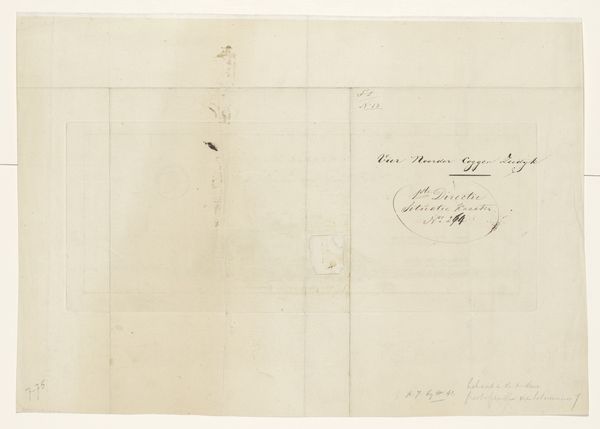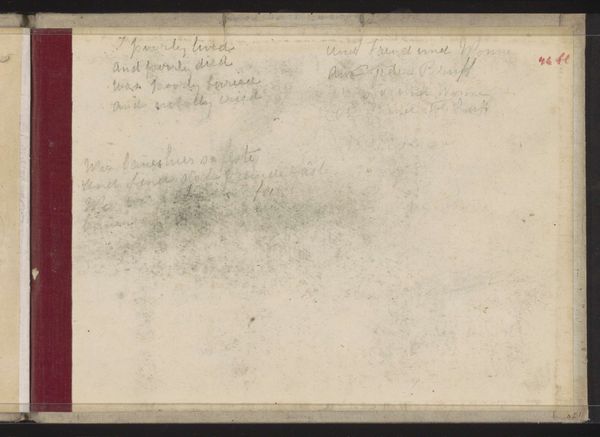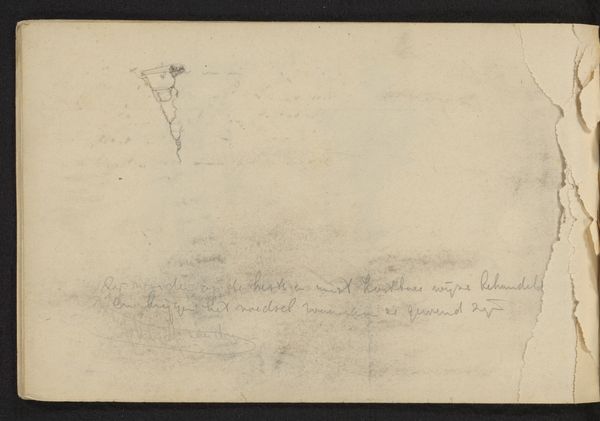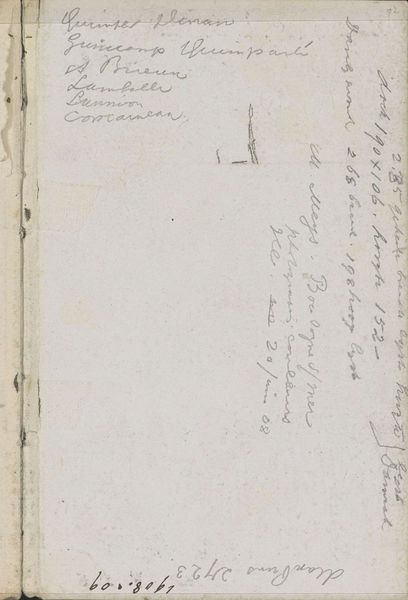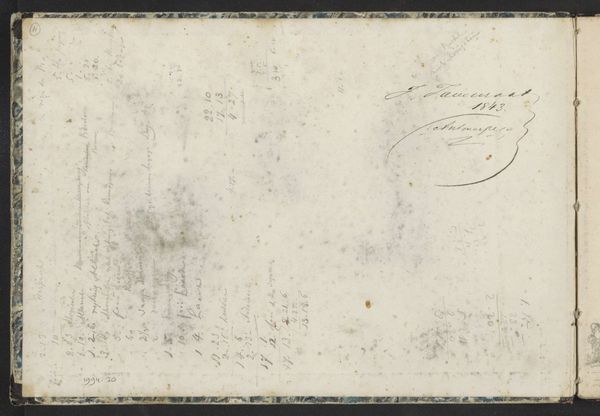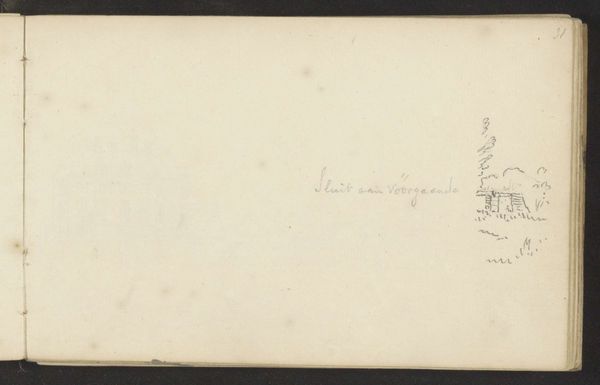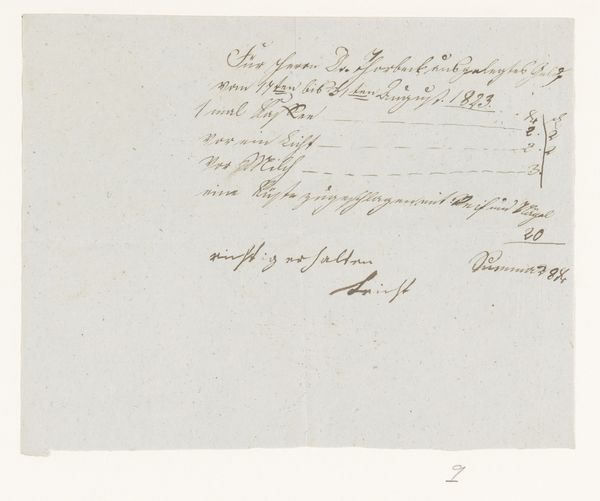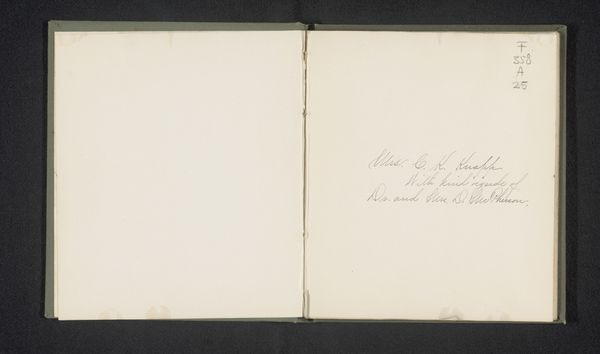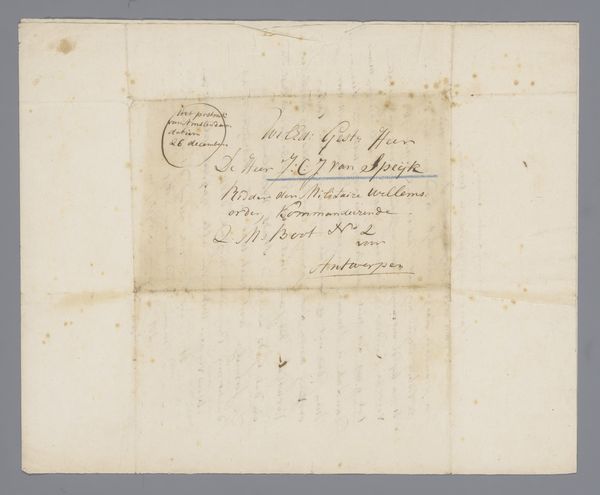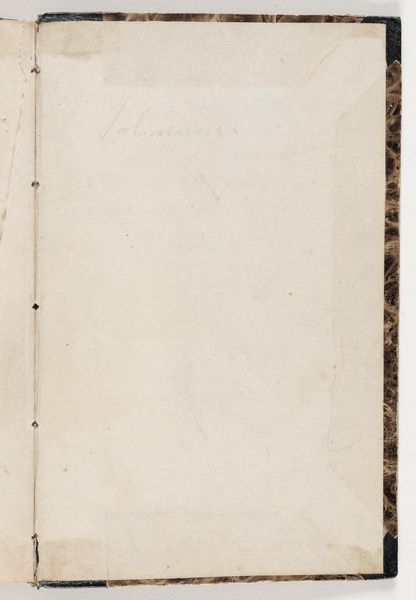
Copyright: Rijks Museum: Open Domain
Curator: This piece, attributed to Johannes Tavenraat, is titled "Signatuur en notities," or Signature and Notes, dating roughly from 1858 to 1870. It’s currently held here at the Rijksmuseum. The medium is ink on paper. Editor: Immediately striking is the sheer blankness. So much negative space! The smattering of ink creates a rather unsettling emptiness. Curator: It's deceptively sparse, isn’t it? To understand this seemingly empty sheet, we need to delve into the world of 19th-century Dutch art education. Tavenraat was a respected instructor. It’s believed these “Signatuur en notities” may be a student's study or a reference sheet for handwriting, or possibly a collector's notes of signature specimens. Editor: That gives it a new dimension. Suddenly, it becomes an exploration of line and form, a semiotic exercise. The deliberate act of transcription elevates penmanship to an art. It’s a play with the positive and negative shapes. I wonder about the weight, the pressure applied in creating those strokes. Curator: Exactly. The context frames it within a pedagogical lineage. Consider the emphasis on precision and discipline inherent in learning penmanship during that era. Class and education would have been inextricably linked to this kind of artifact. These notes act almost like a cultural passport. Who was deemed worthy of such study? Who had access to it? Editor: The ink itself speaks volumes about materiality, then. The way it sits on the paper, a slight feathering at the edges, gives the piece an age and delicacy that digital fonts can never capture. Curator: The Romanticism of the time definitely sought to revive and treasure such lost, personalized skills. Editor: It's like holding a whisper from the past. There's a quiet intentionality, even if what’s “written” doesn’t immediately convey information. It asks us to slow down, doesn’t it? Curator: Precisely. To reconsider the power dynamics embedded within even the simplest tools of communication and knowledge. What does it mean for knowledge to have an aesthetic expression, what purpose did it have? Editor: Considering the formal construction against the historical background gives it a powerful charge. Curator: I agree, seeing Tavenraat's note through both lenses brings forth new interpretations and resonances that neither one could alone.
Comments
No comments
Be the first to comment and join the conversation on the ultimate creative platform.
